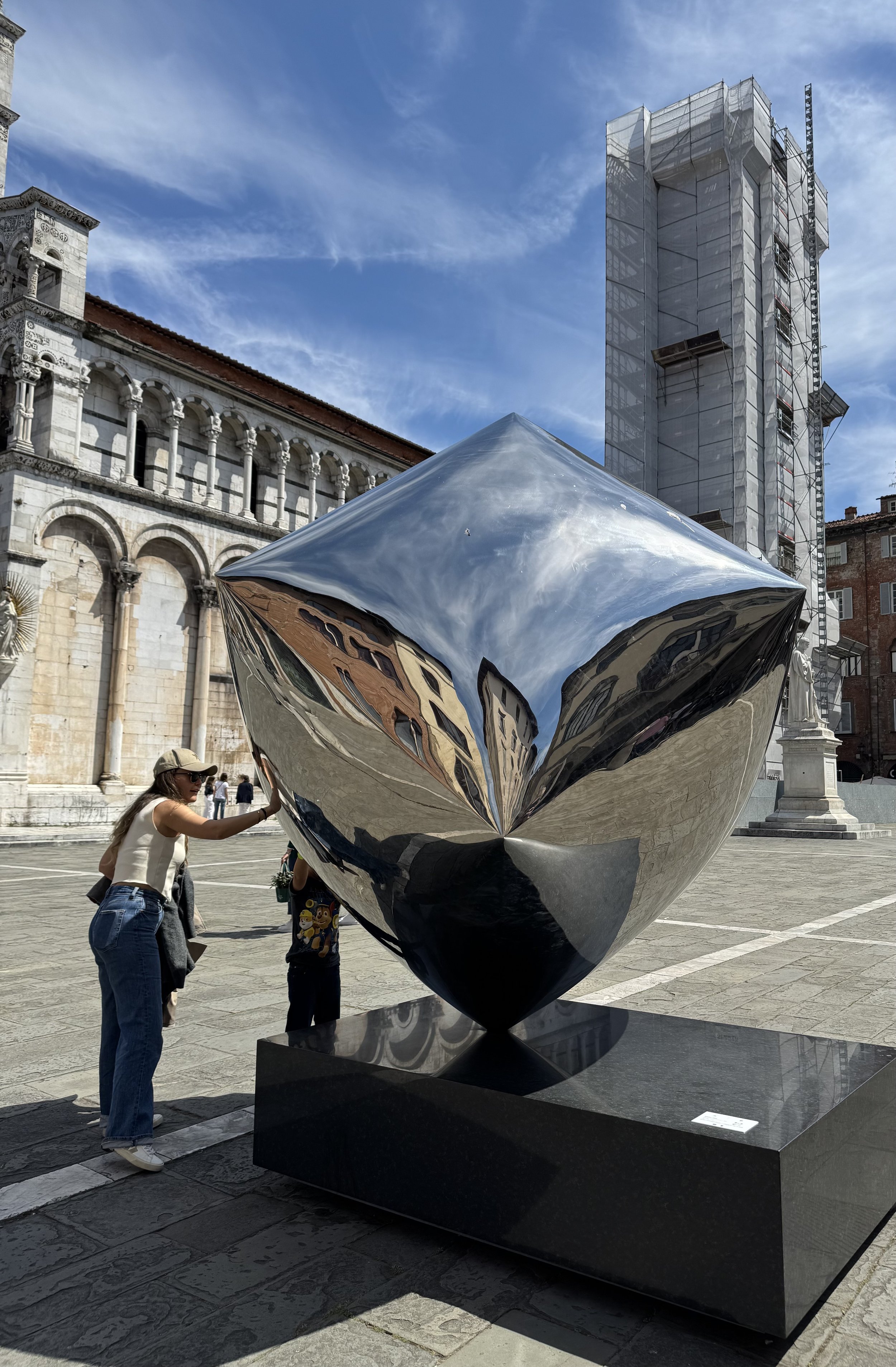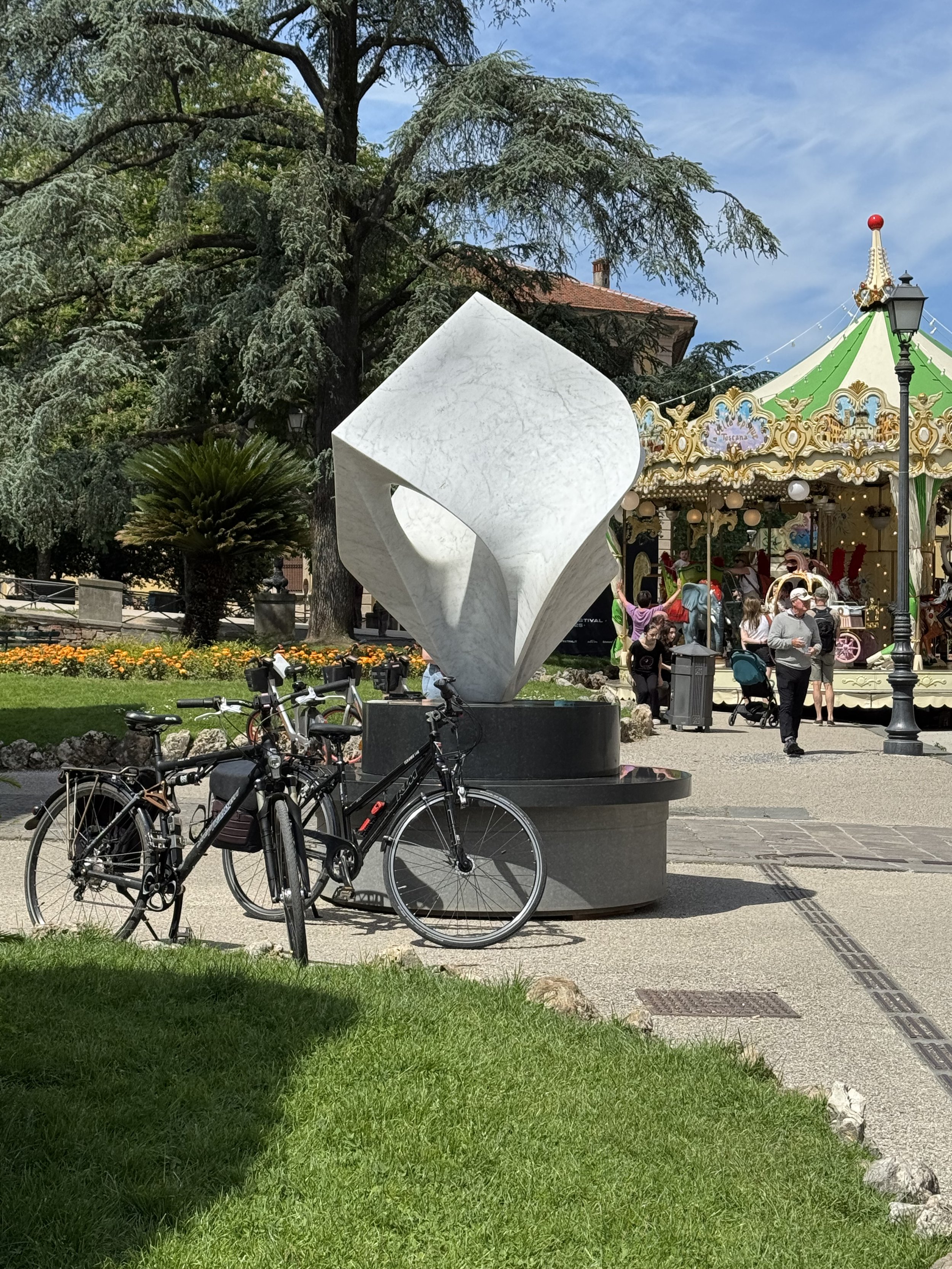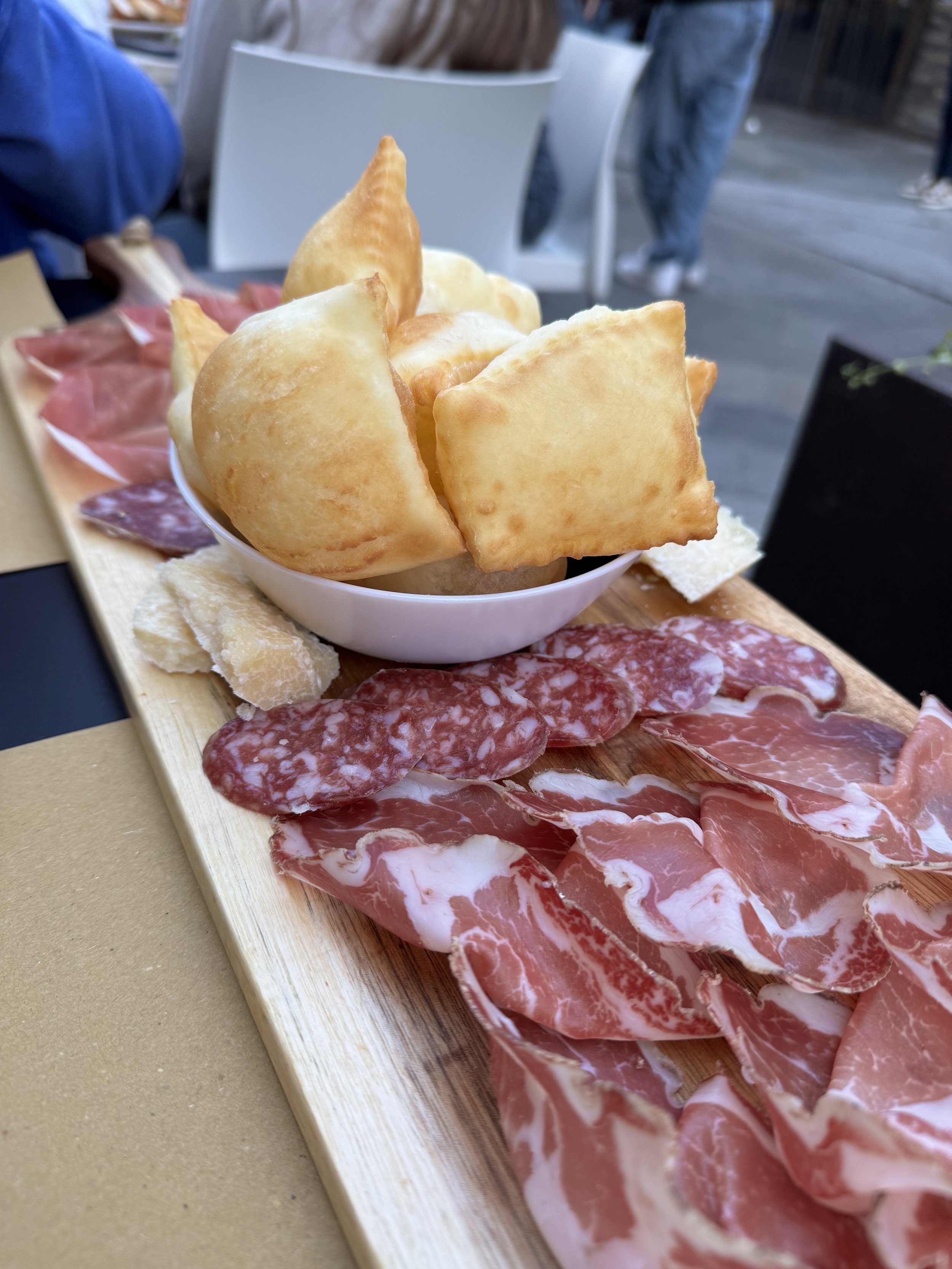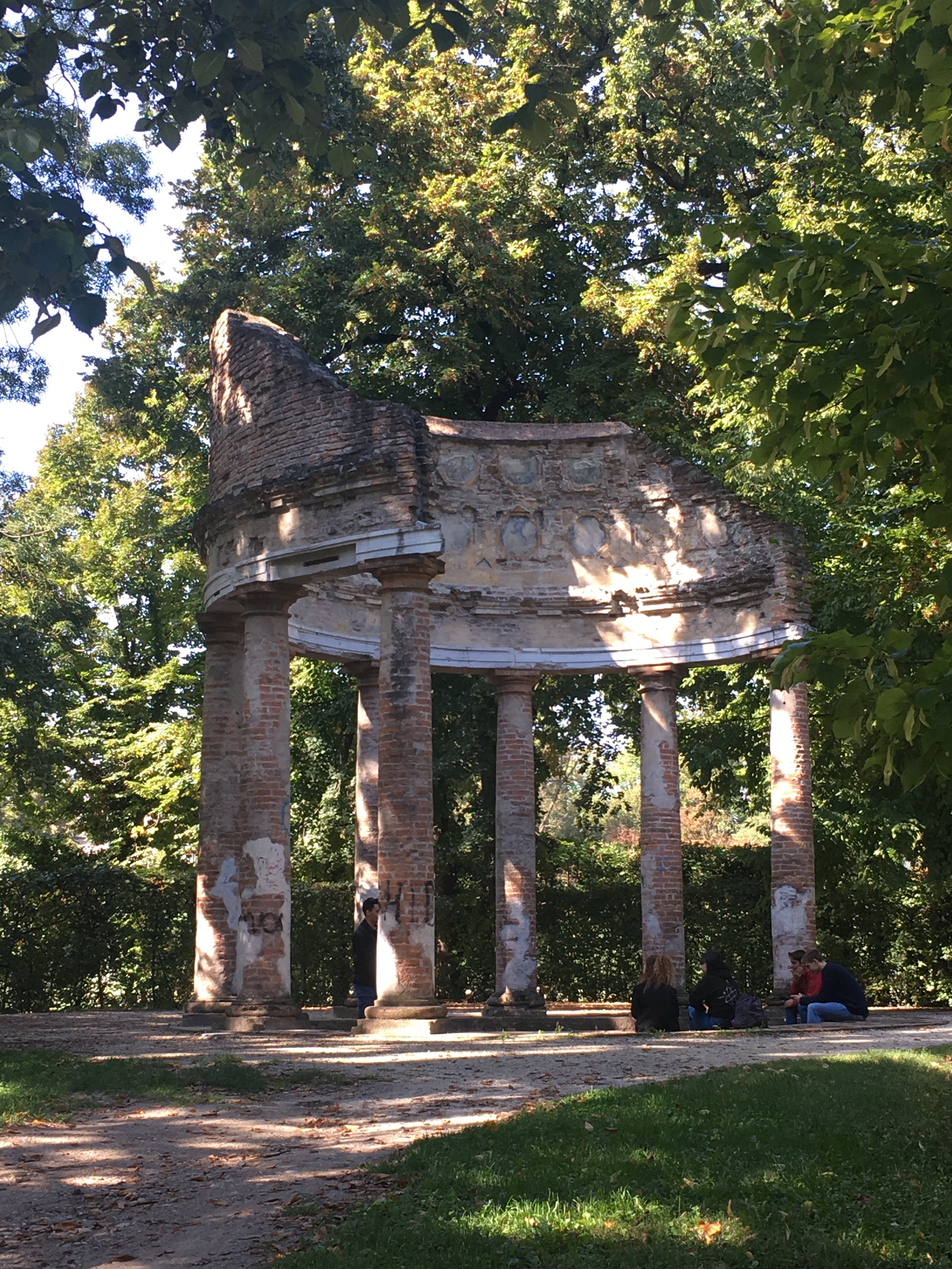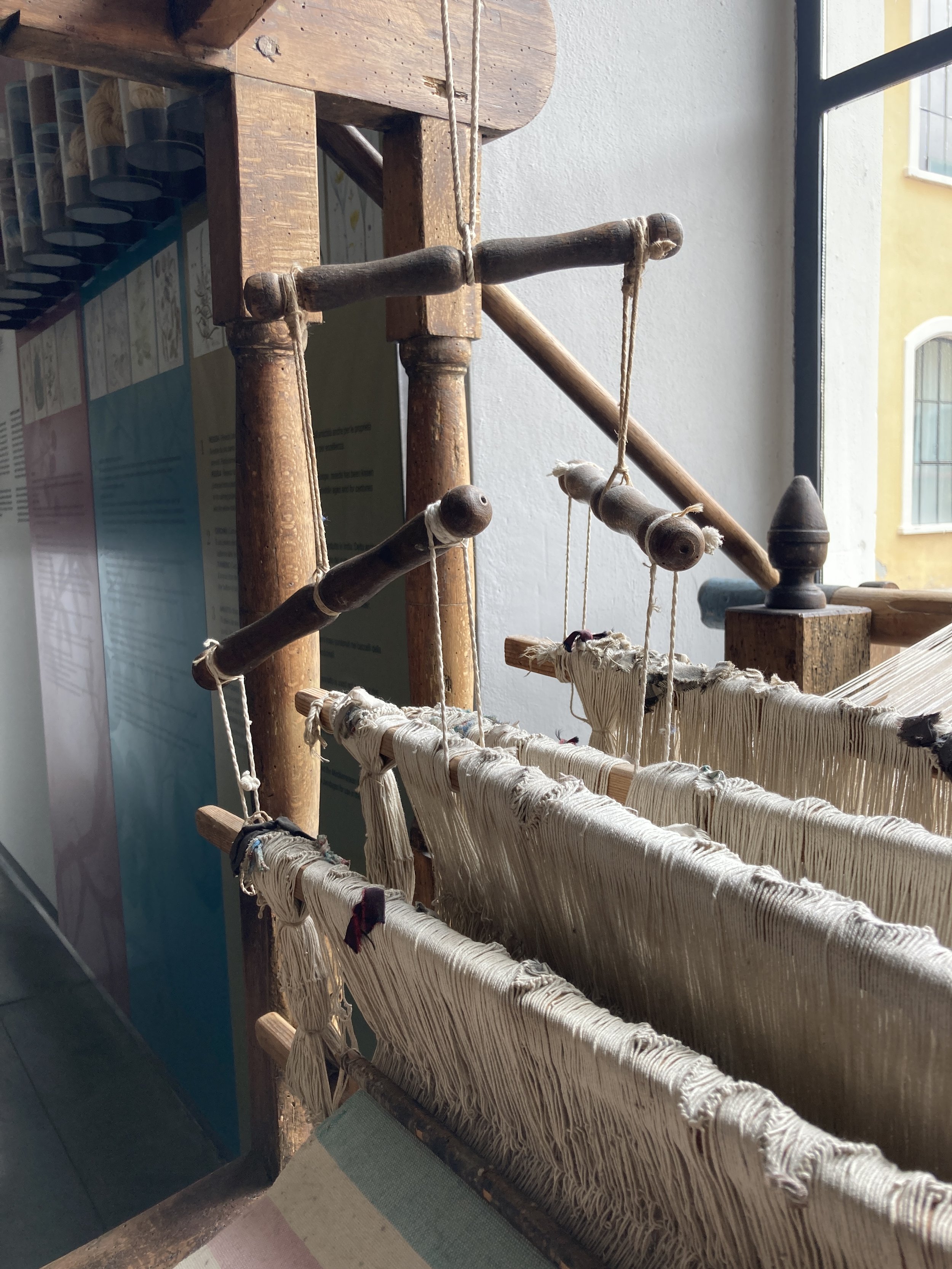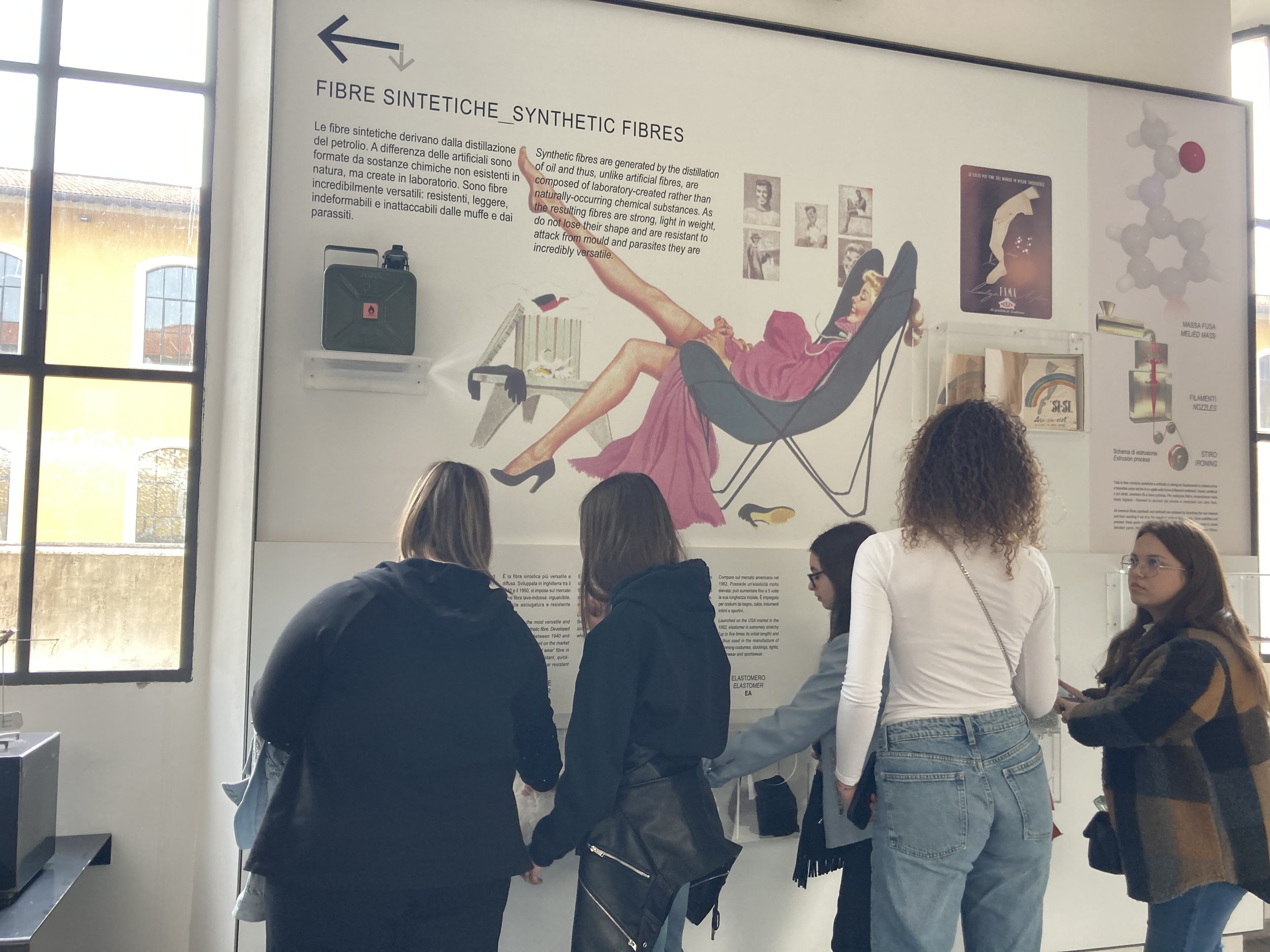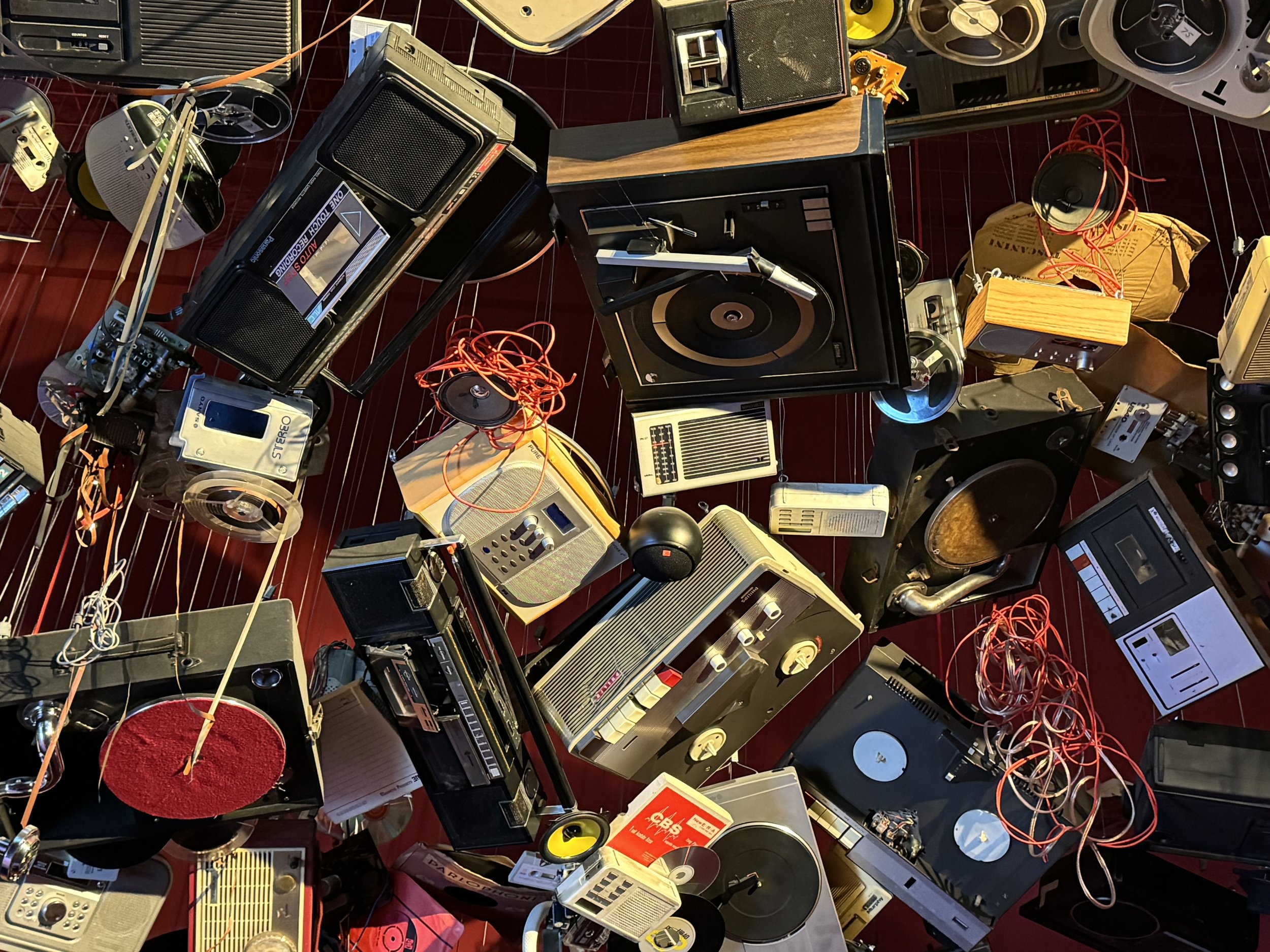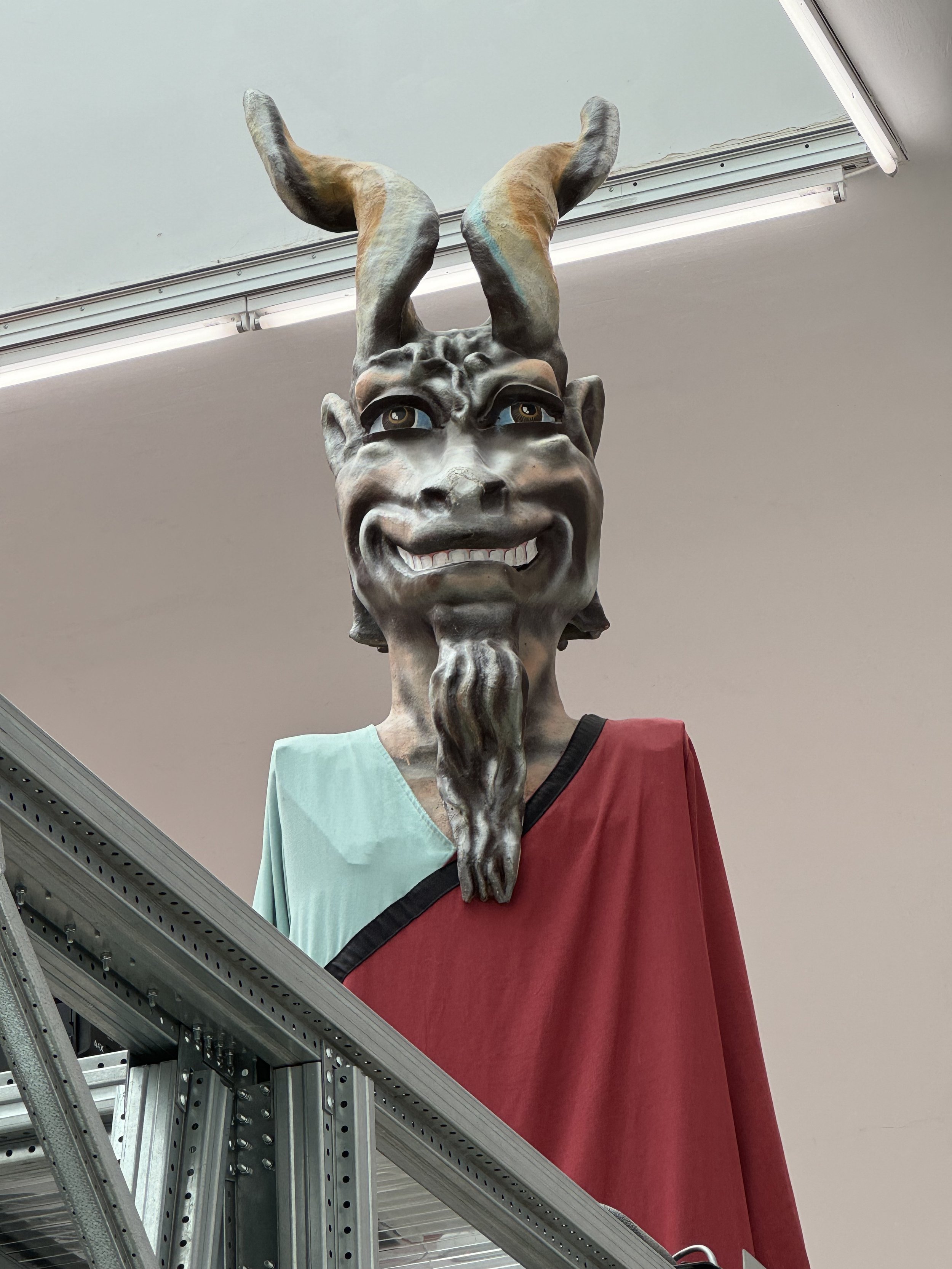Bright Shiny Objects in a Medieval Town
Lucca never fails to surprise and delight, especially when it comes to outdoor art.
One day in May, I spotted a bright, shiny object in Piazza San Michele. Large, geometric, and standing on point, it shimmered under blue skies on a sunny day. Even better, I watched as a child first touched it and then gave it a push, which set it spinning. I am not sure who was more delighted – the child, his mother, or me. This is outdoor art of the best kind – accessible, touchable, relatable, and engaging for people of all ages.
Expansión Geométrica II 2021 Gustavo Vélez.
Over the next few days, a collection of these modern art pieces appeared throughout the historic center of Lucca. The works, entitled Geometria Senza Confine (Geometry Without Borders), are the creation of sculptor Gustavo Vélez. The exhibit is presented by Oblong Contemporary Galleries and curated by Eike Schmidt. In all, 14 pieces are on display around Lucca.
Fiore VI, a sculpture in white Carrara marble by Gustavo Vélez. Piazza Anfiteatro, Lucca
Born in Colombia, Vélez has a studio in Pietrasanta, a city known for its sculptors and proximity to the Carrara marble quarries. Many of the pieces in the exhibit are marble, with works in bronze and stainless steel also included. Below: The same piece, Fiore VI, seems alive with movement when viewed from two different angles.
According to the description by Oblong Contemporary Galleries, Vélez’s art “merges form, space, and movement” working “in dialog with historic spaces”. That makes Lucca the perfect background for this exhibit.
Hipercúbicos V in stainless steel, Gustavo Vélez 2024
The works are impressive in their scale, texture, and forms full of angles, curves, and waves. Seeing them surrounded by Medieval buildings adds a striking dimension. I am not sure if it was intentional or a happy accident brought about by Lucca’s historic setting, but several of the pieces have open spaces which offer glimpses of ancient buildings, stone arches, balconies. Others, the stainless steel pieces, have polished surfaces which reflect the surrounding buildings, passersby, and even a certain blog writer with camera in hand. Each one invites inspection from all angles and in different lights throughout the day. I find myself taking detours as I walk through town just to walk by my favorites or to watch the one that spins delight people as they realize that they can interact with the sculpture.
A few of the larger pieces are mounted on bases big enough to serve as benches. The pieces take on quite a different aspect when surrounded by people sitting below them – another way in which the art is immersed in the life of the city and accessible to all.
The sculptures can be seen throughout Lucca from now through September 21. They are a definite can’t miss for visitors to Lucca this summer.
Cono Geométrico 2023. Gustavo Vélez

